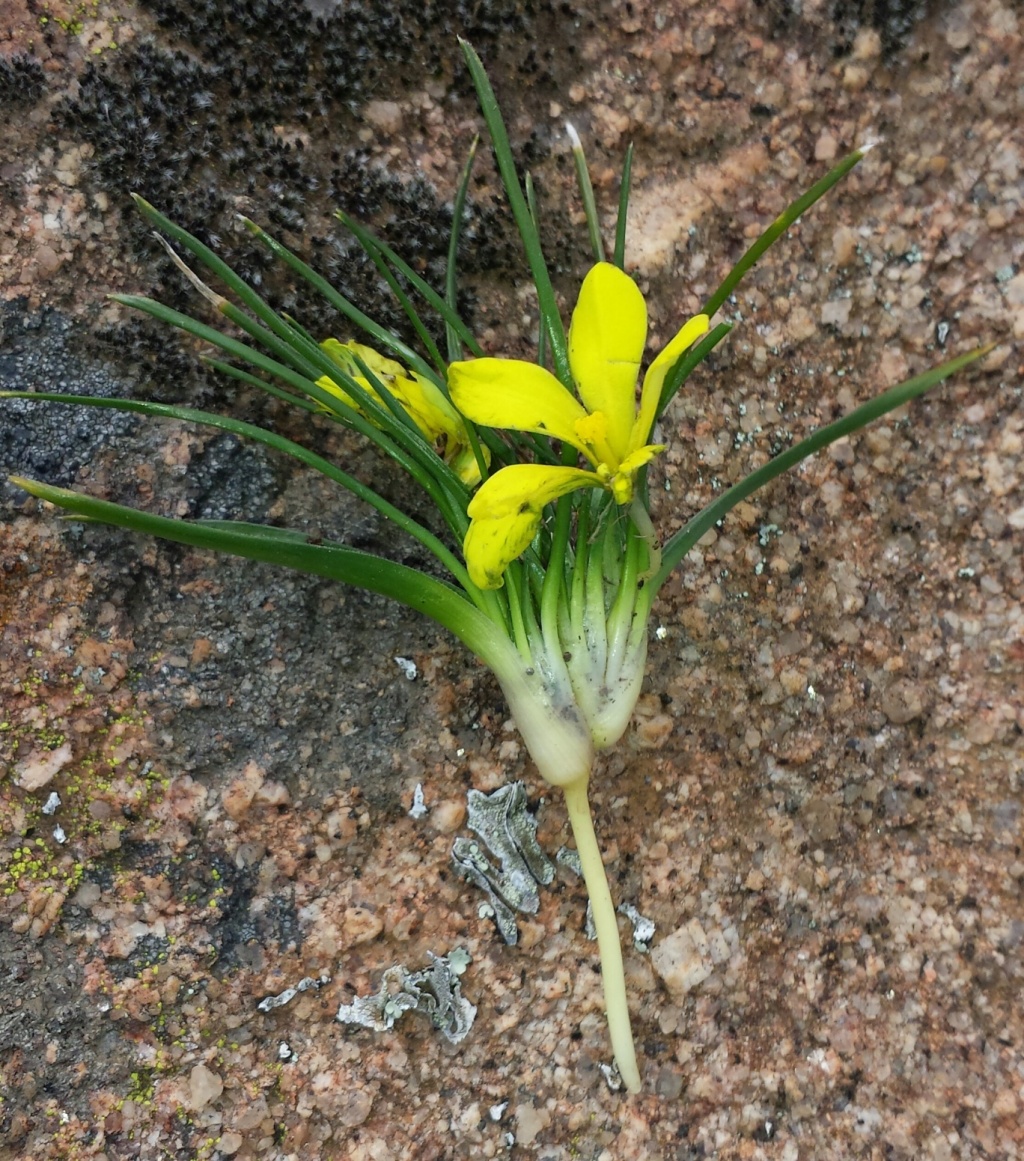Moraea
Perennial herb, leaves and flowers annual; corm globose or ovoid, outer layers fibrous to woody, sometimes with bulbils. Stem sometimes below ground at flowering. Leaves 1–several, rarely numerous, basal or sub-basal, linear, laterally channelled, flat or terete, sometimes with bulbils in leaf axils. Inflorescence with scape branched or unbranched; flowers clustered or solitary, sometimes with numerous flower clusters appressed to scape; primary bracts 2, rarely numerous, usually herbaceous. Perianth parts united basally into tube or free and abruptly narrowed basally, subequal or inner perianth shorter than outer, the inner sometimes greatly reduced; staminal filaments united or almost completely united, rarely free, anthers usually linear, often appressed to style-branches; ovary globose to oblong-linear; style usually short, 3-branched, petaloid, each branch divided or 2-lobed or style terete with 3 stigmatic lobes. Capsule ovoid to cylindric or club-shaped, sometimes membranous, enclosed by, or exceeding primary bracts; seeds numerous, angular.
About 200 species, mostly southern Africa; 13 naturalised in Australia, 9 naturalised in Victoria.
Moraea includes taxa previously included in Barnardiella Goldblatt, Galaxia Thunb., Gynandriris Parl., Hexaglottis Vent., Homeria Vent., and Roggeveldia Goldblatt. The subsequent changes have made Moraea a morphologically variable genus. In particular, the flowers are highly variable. Some species are similar to Iris, with enlarged outer perianth with markings and basal nectaries. Other species have a greatly reduced or absent inner perianth, or plants have neither outer or inner perianth enlarged. Likewise the style branches can be large and petaloid with short crests to relatively short and sometimes further divided into 6 long filiform arms. Moraea is distinguished from other Irises (i.e. Iris, Dietes, Ferraria) by its cormous rootstock with fibrous to woody tunics, and bifacial and dorsiventral leaves.
 Spinning
Spinning



